This look at the history of the India-China rivalry leading to the 1962 aggression, written by the late Sati Sahni in 1986, throws light on our current tensions with China

The outbreak of hostilities of 1962 by China along the vast border between India and China was an important milestone in the long unacknowledged competition of the two of the oldest civilisations in Asia for dominance. It is by no means over as the aggression has opened up more issues than it could conclude. Perhaps it is by design that China intends to keep the border issue alive so as to keep India “occupied” otherwise how can anyone explain the repeated shifting of goalposts by the Dragon? Numerous border settlement meetings between the two have taken place prior to the Chinese aggression of 1962 but every time the Chinese side threw up a new map, argument and reference point. This has actually pointed out that the Chinese side have decided that the differences will always be kept on the boil so as to keep India unsettled. It seems that the Chinese strategy is three-pronged – 1) to force India to divert resources towards defense rather than shoring up economy so that India cannot match up to China. 2) Domination on the Afro-Asian and world stage. 3) Chipping away on India’s legitimate borders in mineral rich Sinkiang and Aksai Chin and gain a foot hold in the Arabian Sea by way of Pakistan as a dependant state.
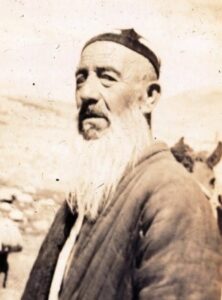
Very few (including the Indian government) could have ever imagined the intense desire of China to possess Aksai Chin, an area in Nehru’s words”world’s bleakest, a land where no people live and no blade of grass grows”. The answer lays in the long term economic and political interests of both China and India – albeit with different perceptions.
For China it was strategic and economic as it was the only viable and safe route to both Sinkiang (North of Karakorum pass) and to Tibet (Lhasa). Sinkiang has known deposits of gold and other precious minerals, and politically it was the meeting ground of three powers – Russia, China and India. The Chinese wanted a buffer between the Russian and Indian border. One just needs to look at the map to understand this – to the North is Mongolia and to the South the tall Himalayas with Nepal, Bhutan and Sikkim acting as buffer. It was only on the East where there was hardly a cushion. Of course it is also a fact that access to Tibet is best from South and West of Tibet – they had to have Aksai Chin and Sinkiang under their control. Incidentally it was the Southern route which the Chinese communists took in 1950 to reach Tibet. In 1956-57 the Chinese built a road through Aksai Chin without any hindrance from the sleeping Indian side. One might ask how the road was constructed through Indian territory without the Indian government getting to know and the answer lies in the fact that there was minimal work required to make the makeshift road (being a plateau and all it was required was to just clear a pathway) and that the restrictions put by the Chinese on the Indian mission in Lhasa completely stopped the traditional trade route thus ensuring no traffic along the route.
Brief history of region of Ladakh
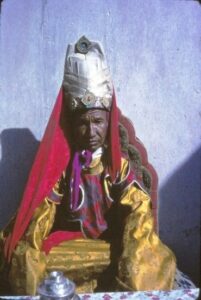
One of the first recorded treaties which has been cited is the Ladakhi–Tibetan Treaty of 1684 does touch on the areas which fell in each others’ territory, was conveniently ignored by the Chinese Communist regime saying that Tibet was under the suzerainty of Imperial China who did not recognize any such third party treaty. It is recorded that the Ladakhi Kings of the time used to send gifts to The Dalai Lama as he was the temporal and religious head of the largely Buddhist world – the Chinese interpret this as if these were symbols of political subordination to Tibet. Sometime in 1717 a Mongol force marched into Tibet from the little-used North route and took it. In 1718–19 AD the Ch’ing Emperor who was not prepared to concede Tibet, decided to march in 1720 and took control of Tibet. This is the event that the Chinese use to cite their “conquest” of Tibet. This event is the first documented direct connection between Ladakh and China as there was a Ladakhi delegation which reached Peking to talk about the future against the Dsungsar Mongols. Talks were held on both economic and political levels. It has been also established that Ladakh was treated as an independent entity by the Chinese.
It was during the early 1820–30s the British started taking an interest but decided that it would serve them best to let Maharaja Ranjit Singh, who was the all-powerful ruler of Punjab and Kashmir, take control of Ladakh and thereby indirectly control it. Maharaja Ranjit Singh in turn asked the powerful Dogra Generals to lead the force. In 1834 the famous Dogra general Zorawar Singh led a force to conquer ladakh- which he did and for the next five years consolidated the area of Ladakh. By 1840 he had firm control over Ladakh and neighbouring state of Baltistan to the west. He soon turned Eastwards towards the lucrative North Western Tibet – basically to control the lucrative wool trade. It is said that being a devout Hindu he was keen to visit Kailash Mansarover, but decided to capture the territory as he went along. Having reached as far as Taklatok on the Tibet–Nepal border, the alarmed British were concerned that if the valiant Dogras (along with the much larger Sikh force combined) and Nepalese got together and marched on Tibet then they would lose control of a very major area and more importantly lose face in rest of India. They wanted Zorawar Singh to return to Ladakh and stay put. Unfortunately, the Tibetans retook control of Taklakot and in that Zorawar Singh paid with his life. Later attempts were made to keep Ladakh under self-rule with the British and the Sikhs, but the Tibetan army having tasted success wanted to take Ladakh. A major battle between them and the Dogra reinforcements was fought in Chusul (near the Pangong Lake) in1842. The Tibetans lost very badly and retreated. Thus leaving the Dogras (now under Dogra King Gulab Singh in Jammu) as the supreme authority in Ladakh. A treaty (between the Dogras, Tibet and the Ladakhi kings) was signed on 17 September, 1842 where it was decided that the Dogras were the rulers of Ladakh (through the Ladakhi kings) and the Tibetans would keep control of their area ( Tibet). The treaty specified that all of Ladakh including Aksai Chin came under the State of Jammu & Kashmir and was formalized by the British and Dogras separately demarcating the boundaries. It was also decided that there would be deep friendship politically between Ladakh & Tibet (please remember that as both areas were Buddhist there was no problem with the religious side). Most importantly it was also decided that trade routes would remain open and allow unfettered trade.
Unfortunately the information given to the Chinese Emperor in Peking was highly distorted and furthermost from the actual picture. Conveniently this interpretation is what the Chinese refer to and not the actual happenings. They argue that Tibet was subordinate to the Chinese Imperial Court and could not take any decisions or treaties on political and economic issues. That treaty very specifically states that “not now or in the future the Tibetan state will interfere with boundaries of Ladakh come down from ancient times, and it’s surroundings”. The Dogras formalized this too with the British and thus Ladakh came to be as part of the greater State of Jammu & Kashmir.
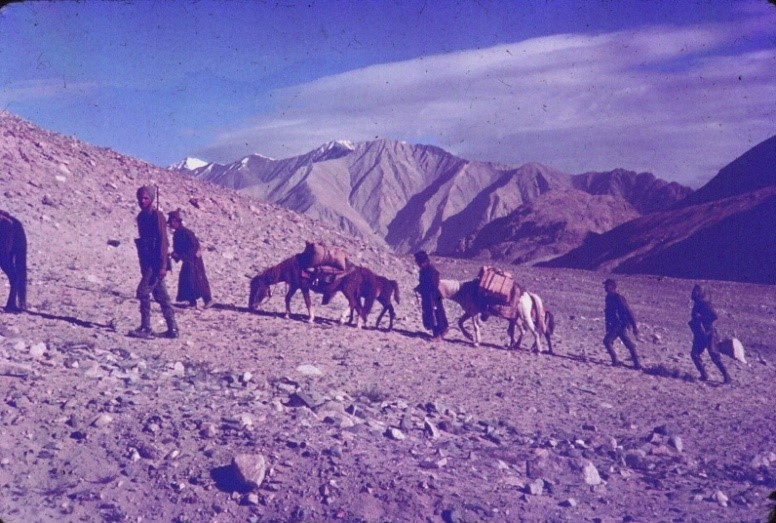
The period from 1900 to 1950 are said to be the most peaceful between Kashmir and Tibet, though each one had their own share of problems. In 1913, British India, China and Tibet met at Shimla to discuss and demarcate the international boundary as per maps available. Though China participated, they later backed off saying that the maps were not correct and could be taken as final.. The British at that stage upset at this flip flop attitude of the Chinese decided to bypass the Chinese totally and discuss India’s Himalayan border directly with Tibet. China, later rejected this McMahon line demarcated and maintained that the said treaty had no sanctity without China’s endorsement.
As far as Ladakh was concerned the main problem happened when the British left India and the two states of India & Pakistan were created. Having met with stiff resistance in the Kashmir valley, the pro-Pakistani forces pushed through Gilgit, Baltistan towards Leh. It was the arrival of Indian forces at the eleventh hour that the Ladakh, as we know of now, was saved. A hastily constructed airfield just outside of Leh brought in much needed reinforcements.
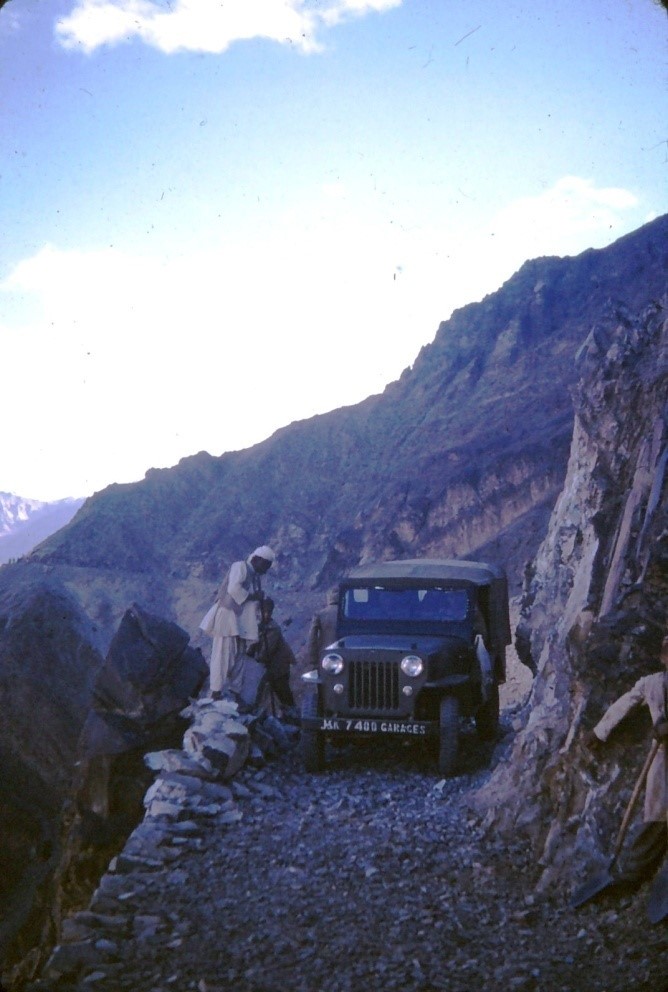
After India’s independence, naively Nehru started deepening relations with China, who never looked at the friendship as India did. The government pursued non-alignment which China took as being a sign of weakness and without any backing. After the invasion of Communist China into Tibet in 1950, India lost it’s toehold in Tibet. India which was preoccupied with it’s own problems did not think too much into it, and China took advantage of that by showing some parts of Aksai Chin as part of their territory. India by then had recalled their mission in Tibet and thus were literally left blind to the happenings in that part of the world. Aksai Chin erroneous maps did surprise and raise resentment in New Delhi, but Chou En Lai deceptively kept on telling that that this was based on old maps and would be corrected soon. Obviously the diabolical minds in Peking had other ideas. India did pursue this in the world fora for a while, but nothing came out of it. India did not understand well enough Mao Tse Tung’s words which were perhaps said elsewhere but directed to India – “Power grows out of the barrel of a gun”.

The Panchsheel Agreement of 1954 was for “peaceful co-existence” based on the 5 principles of mutual respect, mutual non-aggression, mutual non-interference, equality & mutual growth, and peaceful co-existence. Nehru took this as though there was no outstanding issue and started promoting the Hindi–ChiniBhaiBhai slogan which meant nothing to the other side. It now comes to fore that the Chinese were only playing for time to strengthen their defences and build infrastructure. In 1956 word came to the Indian government that China had started building a highway through Aksai Chin – through Indian territory. This was completed by 1957 but yet again India did not recognize this development seriously. Finally some patrols were sent but the Chinese chased away one and captured the other. The reality of the situation finally dawned on New Delhi, but by then it was too late.
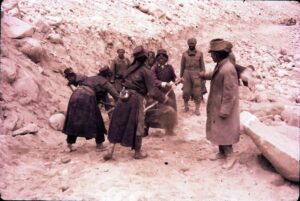
In 1959 the communists had started enforcing their style of rule in Tibet. It was then that the Dalai Lama escaped to India and was promptly given asylum. This enraged China no end and there was nothing but hostility – gone was the bonhomie of the Panchsheel Treaty. In retaliation to India’s actions they decided to encroach further into Indian territory by ambushing patrols in Eastern Ladakh – specifically in the Hot Springs and Spanggur area of Chushul. They set up permanent posts without being challenged by India. Some 2240 sqkms of Indian territory was occupied by them by that time. Strangely even then Nehru’s government did nothing to shore up defences. In early 1960 Chou En Lai visited India – ostensibly to talk border settlement but the talks failed miserably. He further stated that the areas they had occupied were China’s now. It seems that he closed the door on any further negotiations. Thankfully some action was finally taken and India decided to shore up defences. With just one infantry brigade and a few J&K militia battalions to look after nearly 480 kms of hostile territory was woefully inadequate. There was no road infrastructure and everything had to be moved by men and on animals. Important issues like high altitude and lack of fodder were real challenges. It was only a year after the induction of the forces in Ladakh, the first post at DBO (Daulat Beg Oldi) – just 16 kms away from the Karakorum Pass – was established. Due to hostile terrain, only one route could be used through the year – via the Shyok river. Winter is very treacherous and even now there are skeletons of humans and animals which can be found in the area. Simultaneously small posts were being set up right from the Southern most area of Demchok till DBO in the north. Regular reports were coming in through local shepherds that the Chinese were consolidating positions and creeping forward. Cunningly they believed in the adage that occupation was 9/10 of the law.
It was then a new policy was formulated in India to combat that and was called the “Forward Policy Directive” and the India troops were ordered to move deep into unoccupied India territory as much as was possible and set up posts. With very limited manpower each post could only be manned by with 10-20 troops at the most. The Chinese had many times the number of men, and more importantly they had been building roads and communication network very close to their posts and so could quickly deploy and redeploy. It was a great achievement that the Indians recovered quite a bit of our territory with this policy even though it was tactically flawed.
A landing strip was created in July 1962 to service the many posts being created in the DBO area. This is still the world’s highest landing strip and has proved to be of immense advantage for the deployment there.
The first move made by the Chinese was in late 1961, when the a large unit of Chinese troops came right upto a post in the area , expecting the small detachment to give up and retreat but our jawans held on their nerve. This was apparently a test to see the resolve of the Indians. After testing our posts a few times at various locations it must have dawned on their local commanders that the Indians will not retreat in face of a numerically superior force and other tactics had to be used. I am told that this was the first time Army HQ had issued the order of “fight to the last man and last round” – at least on the China border.
An important post was set up in the strategically important Galwan valley. Soon after the post was set up a large Chinese force surrounded it and tried all tricks to dislodge the small Indian Gorkha detachment. The siege went for a long time, but the Indians did not budge and this probably is when the Chinese decided to change tactics. On 19 October, 1962 they decided to take two posts in the Despang plains by force. They came in strong with heavy artillery and with a force of nearly 10:1. Intense fire fights ensued that night but the outnumbered and ill-equipped Indians could not hold on and had to lay down their lives in a gallant fight. Word came that out of a total of 18 posts in the DBO sector only two were still with India. The Chinese aggression had begun. The next day the remaining two posts were also overrun.
Soon news came of the post Galwan came under heavy fire and was soon over run as were quite a few more posts – simply because of lacking in numbers and inadequate fire power. It has to be pointed out that the casualty in the Chinese side was far higher, but with overall numerical superiority of many times over Indians could not halt the wave. Simultaneous attacks were carried out on the Chushul and the Demchok Southern sectors, where too because of their superior numbers they just over ran the Indians. By the 28 October the Chinese halted operations to regroup and focus. They now held the frontline from Demchok–Sirjap (Chushul ) – DBO line which the Indians once held. The government promulgated emergency and the Defence of India ordinance was issued. Across the country massive fund collection drives were initiated and generally people offered any and everything they could give, including enrollment to help the frontline in any way. This really boosted the morale of our troops and one could feel a sense of patriotism everywhere.
The IAF too played a very valuable role as they kept on flying sorties after sorties with men and material to shore up defences all over Ladakh. Fairchild Packets, AN 12 and MI helicopters were relentless. Leh, DBO, and Chushul airstrips were used very frequently. The American company manufacturing Fairchild Packets wrote to the IAF that these aircrafts could not be used at such altitudes. Yet it is these men of valour who flew these to such heights. Only ingenious retrofitting of the AN 12 could produce miracles like the airlifting of tanks to Chushul. Just like the Americans, I am sure the Russians could not believe the Antonov aircrtaft could lifts tanks to those heights.
In the meanwhile, the Brigade made plans for defence of Leh – the capital city. Soon reinforcements arrived in Ladakh and the action now shifted to Chushul where it was expected that the Chinese would confront the Indian army. The existing brigade under the redoubtable Brig Raina (who later went on to become the Chief of Army staff) headed to Chushul. This is where the famous battle of Rezang La was fought. In the annals of Indian Military history this is probably the most well-known battle fought by a much numerically inferior force (1:10) and against all physical odds. The valour of the detachment of Kumaon regiment fighting in temperatures of 30 Degress C below are now legendary.
Chushul – Battle of Rezang La
Brig Raina began shoring up defences immediately upon arrival and identified the three main routes the Chinese could take to attack. From all strategic thinking it was the Spanggur gap area which was the most probable area where they would come down from as they could control the Leh to Dungti road. This was the lifeline of the area and whoever controlled that, was at the most advantageous position. Deployment of various battalions was done, along with detailed planning meticulously by Brig Raina. A squadron of tanks was airlifted from Chandigarh by the redoubtable AN 12 aircrafts and this really gave a very good equation of balancing out the defence as never had tanks been pressed into service at these altitudes. While it was the Stuart tanks which did commendable duty at Zoji La in 1948, here it was the AMX tanks. Operating at such altitudes soon become a world record.
For some strange reason the attack did not come till a month later. By that time the Indian troops who were all set in their trenches, could not understand why we could not attack rather than wait endlessly. It was not as if we had not been attacked earlier but the fact is that we have a holier-than-thou attitude otherwise what would explain this wait ? Poor military tactics as the Chinese could be seen building on their defences and arsenal. I am told that the orders to not initiate the attack came from Delhi. The Chinese had already killed many a fellow jawan and the troops were irked and wanted to take revenge. Knowing the overwhelming odds and unbelievable temperatures they were fighting against, one can only imagine the motivation and spirits they were in.
Finally on the dawn of 18 November the attack was launched by the Chinese hordes. As expected the Battle of Chushul was fought at the Rezang La and the adjacent Gurung hill. Wave after wave of Chinese soldiers kept coming and all ranks of the 118 Kumaon regiment fought very bravely. Intense artillery shelling from the Chinese could not dampen their morale, but it was known beforehand that it would be akin to fighting with one hand behind the back. Though the Indian were again outnumberedby atleast ten times, the troops did not lose their nerve. The fight on their hands gave a new meaning to last man to last bullet – but after they exhausted their ammunition they fought hand to hand. Major Shaitan Singh, the company commander – true to his name gave hell to the Chinese. Unfortunately the Battle of Rezangla was over that same evening and that of Gurung Hill the next day. Having given up positions, the rear guard troops retreated to save Chushul. It was only possible to collect our gallant dead troops in February 1963, and those who went to collect them say that each soldier’s body was found in a combat position holding/ firing their weapons with multiple wounds. Many were bayoneted as their own ammunition was exhausted. From a total of 118, only four managed to return alive. Atleast one ParamVir Chakra, eight Vir Chakras and four Sena Medals were awarded all posthumously (except for four). A monument to the memory to this battle has now been constructed at Chushul.
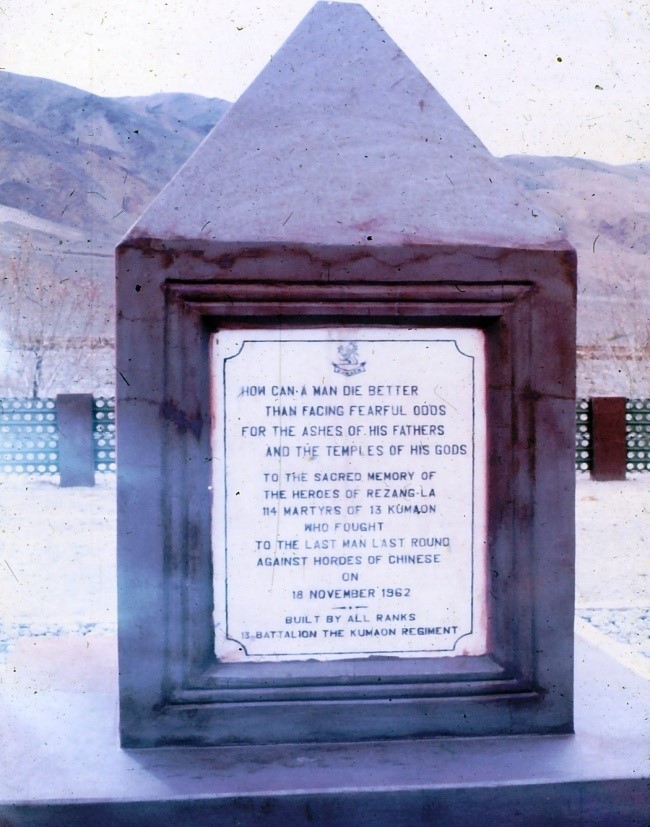
The Battle of Gurung Hill is no less covered with glory where the Gorkhas were tasked. Famous for their hand to hand combat with Khukhris they fought like demons, but again overall numerical superiority of the Chinese was just too much. Similar battles were fought at Camel Back feature with very similar results. In hindsight I am sure the troops sorely missed having strong artillery back up and who knows that the results may have been quite different. Just like the battle of Rezang La, military awards and honours were given to many who fought.
Maggar Hill was another feature where our artillery gave a bloody nose to the Chinese, and although could not gain any further ground we consolidated on our position.
The Chinese had a much heavier price to pay with at least 4–5 times casualties. By now the first round had been squarely in China’s favour and positions were quickly erected for the second round expecting them to further gain ground. For some reason they declared a ceasefire on 21 November and the guns stopped booming. If they wanted to take advantage of our being down and out they could have pushed us further west and occupied much larger area, but perhaps it did not fit into their long-range plans.Very wisely our commanders were not fooled and expecting the deceptive Chinese to renew their hostilities, kept up our defensive positions. I am told that our fall-back positions were very well chosen, so if the attacks were renewed the Chinese would have had to expose themselves across Chushul valley.
Thus ended the Chinese aggression of 1962, with India getting a bloody nose. There is no doubt that we were caught unprepared but it cannot be attributed to our gallant frontline jawans & officers. One can point out to a few reasons and were hotly debated for a long time.
The first can certainly be attributed to the wrong assessment by our political leadership. The biggest mistake was that they took Chinese leadership on face value rather than reading their intentions. The communists did have only one agenda – which our leaders could not see through. Expansionist China who totally obscured historical data and information wanted an inept Indian leadership and got their wish. Indians totally ignored the military build-up including road constructions, and most importantly totally ignored the invasion of Tibet. They forgot to consult maps to see what the Chinese would need to consolidate their positions in Tibet and Sinkiang.
I also think that our tall military leadership did not stand up to the political leadership to tell them that India’s military was not ready for a well-prepared Chinese attack. Eyeball to eyeball confrontation would eventually lead to an all-out war. There was also much consternation about the order of last man to fight to last bullet against such a vastly numerically superior force. There was no way we could have won and so what was the reason for this order and lose precious lives? Similarly why was no artillery support provided at the Battle of Rezangla? Why could no additional guns be pressed into service? If the Army HQ realized that the full brigade has to be moved from Leh to Chushul they knew the importance of this battle and so accordingly additional artillery should have been provided. It is on record that there were two more field artillery batteries in Ladakh at that time and could have been redeployed and moved back in case of major reverses. It was just a massacre.
Finally, there were a few blunders like the Forward Policy Directive as it drove on limited resources too thin. I think that the miscalculation was on account of the thinking that the Chinese would not get into a fire fight. What gave that impression to our political leadership at that time is beyond me. We too did not take advantage of the most suitable and high altitude adaptive Ladakhi population and instead pushed on people from other parts of India who were ill-prepared for high altitude warfare. It seems that no provision, and more importantly, thinking was made to employ these local and highly motivated people. We surely could have saved many a lives. By the time the Indian leadership understood the value of these hardy and brave people, it was too late.
The Indian political establishment, including the opposition of that time, protested loudly to deal firmly with the Chinese and with added pressure wrong decisions got taken. Poor decision making and unpreparedness in the (then) NEFA (North-East Frontier Agency) was the worst scenario. China managed to capture much beyond Tawang up to Brahmaputra plains in the Eastern Sector and in the Western Sector they completely swept across Aksai Chin, captured Chip Chap valley, Galwan Valley and Pangong Tso lake. PLA had captured areas quite deep into Indian territory on both Eastern and Western Sectors. Thus, if China wanted, they could have easily retained captured territory up to Tawang which is equally important to the Buddhists. The Chinese even claimed that to be their own. Their unilateral decision to withdraw completely up to its claimed ‘Line of Actual Control’, in that sector has baffled many a pundit. On the other hand they decided to retain over 2000 sq km of barren Ladakh. Nearly 10 years after the 1962 skirmish Chinese Premier Zhou claimed that they had withdrawn back across the McMahon Line in good faith. Thus, this was the first admission on part of the Chinese that the McMahon Line was recognised by them as the de facto Line of Actual Control (LAC). This LAC is about 3400 sq km and runs along along with Ladakh, Kashmir, Himachal Pradesh and Arunachal Pradesh. There is no known dispute on the Sikkim border and is known as the International Border.
PostScript – On Uncertain Ground
By Navneet Sahni
Apart from the Nathu La skirmish of 1967, there has been no other armed conflict along the LAC though there is still disagreement on the exact demarcation of the McMahon line and has led to several frictions from time to time. As far as India is concerned what China kept after the 1962 war is what they wanted to begin with. It will not be easy at all for them to take any more territory now as this is not the same India as earlier. Any military adventure will really push them back for many years and they will lose a lot economically, setting them back by a long time. China’s geo political policies too has undergone changes as they to want use their financial and technical prowess rather than military power as long as they have parity in dominance in their area – Asia.
I think that New Delhi knows that China will never officially accept the LAC as the IB, China too knows the ground reality is different and that this is the defacto border. However these events like the present one at East Ladakh, or the one at Doklam or at Nakula will continue as it serves a very important purpose – to keep the Indians engaged, ensure that there is always a threat perception so that India reacts to it. This they feel will always show who is in control and in the eyes of the immediate neighbours be the dominant country. Ofcourse this also ensures that India’s resources are constantly diverted which otherwise could be invested in overall development. That is the reason why you see such instances happening every year.
However this year a major shift in that thinking has taken place and is linked to the abrogation of article 370 and the fact that India is now openly calling for taking over POK – the call for Akhand Bharat. Considering the fact that India & China has had summit level talks in Wuhan & Chennai this latest aggravation just means that it has been sanctioned by President Xi ‘s to say the least. BJP & RSS call for reclaiming POK, Gilgit Baltistan & Aksai Chin territories has rattled the Pakistanis no end but has actually sent shivers down the Chinese. Till now China has not been too vocal in India’s western border issues. So what is the main reason ? Yes India has been building road & other infrastructure along the border to correct the historical lapses but then that has been going on for some time now. Most analysts feels that there are several factors but it is the fear that now India has road infrastructure till DBO which is just 18 kms from the Karakoram pass and can make things difficult for China. Clearly China cannot accept POK & Gilgit / Baltistan falling back in Indians hands as it would mean the end of the massive China Pakistan Economic Corridor (CPEC) where billions have already been invested. Without making any pretence they have been taking away POK territory from their client state Pakistan so that India would never attempt to take back that area. Everyone knows that there are local struggles & uprising in Gilgit Baltistan and if this area comes under India’s control they can choke of CPEC at will but more importantly will allow India access to Central Asia where anti China sentiments are at its peak on account of the indoctrination & subjugation of the Uyghur Muslims is taking place on a large scale. Thus with that very strategic area not being in their control their dreams of reaching the Arabian sea will remain so. What has also unnerved China is a series of geo political happenings with the US having called China’s trade bluffs, happenings in the Taiwan straits, Hongkong uprising and finally it being cornered by the west for Corona Virus. China’s economic growth too has just been on a downward trend and with the creation of the Indo Pacific strategic cooperation between Australia, Japan, US & India they seem to be getting threatened on all fronts.
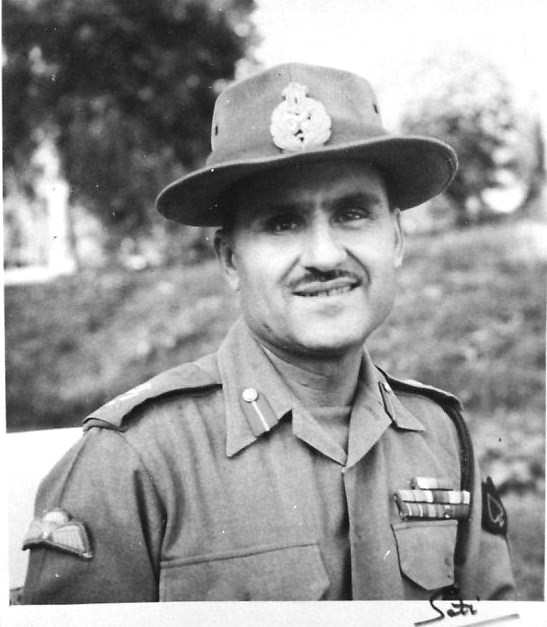
The growing voices across the Western world against China’s bullying tactics of One belt one road initiatives and takeovers of a few debt ridden institutions in a few countries has not gone too well also. The Chinese government’s strong backing, pushing & intent of Huwai’s 5G technology too sent doubts in minds of Governments across the world. India, a major trading partner of China, has consistently refused to be part of their BRI plan is very unnerving. I think the final push into some of action and flexing of muscles by them was given by PM Modi’s call of “ Atmanirbhar Bharat”. If India becomes a manufacturing base for China it will mean fear of losing a large trading partner as well as on the world stage will mean loss of face domestically where Xi has been talking about raising the domestic earnings of the average factory worker. The Chinese pride themselves in being a strong economy and thus an economic power backed by a strong army in domestic eyes looks invincible. However with things not looking rosy at all I am sure it must be very unsettling. Political analysts are also alluding to an internal strife within the ruling party and the fact that Xi Jinping’s vice like control has derailed a lot many aspiring power centers now that he has manipulated a life term for himself.
From the statements coming out of Delhi, there seems to be little chance that India will blink first as with a lot of the world is aligned against China. President Trump of USA is just itching to jump in and the political analysts feel that China will not take such a big risk. A new cold war has already begun and with clear alignments indicated China will be vulnerable and will not allow things to get out of control. Watch this space…








